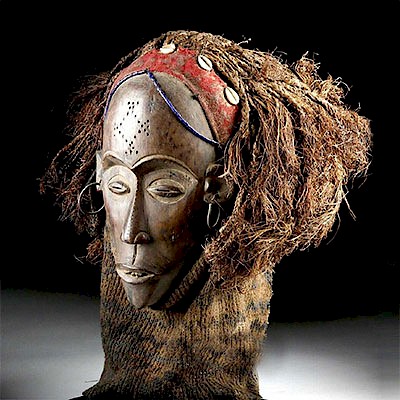Gandhara Schist Panel -Death of Buddha, Great Departure
Lot 64
About Seller
Artemis Fine Arts
686 S Taylor Ave, Ste 106
Louisville, CO 80027
United States
Selling antiquities, ancient and ethnographic art online since 1993, Artemis Gallery specializes in Classical Antiquities (Egyptian, Greek, Roman, Near Eastern), Asian, Pre-Columbian, African / Tribal / Oceanographic art. Our extensive inventory includes pottery, stone, metal, wood, glass and textil...Read more
Categories
Estimate:
$2,000 - $3,000
Absentee vs Live bid
Two ways to bid:
- Leave a max absentee bid and the platform will bid on your behalf up to your maximum bid during the live auction.
- Bid live during the auction and your bids will be submitted real-time to the auctioneer.
Bid Increments
| Price | Bid Increment |
|---|---|
| $0 | $25 |
| $300 | $50 |
| $1,000 | $100 |
| $2,000 | $250 |
| $5,000 | $500 |
| $10,000 | $1,000 |
| $20,000 | $2,500 |
| $50,000 | $5,000 |
| $100,000 | $10,000 |
| $200,000 | $20,000 |
About Auction
By Artemis Fine Arts
Apr 4, 2019
Set Reminder
2019-04-04 10:00:00
2019-04-04 10:00:00
America/New_York
Bidsquare
Bidsquare : Ancient / Ethnographic From Around The World
https://www.bidsquare.com/auctions/artemis-gallery/ancient-ethnographic-from-around-the-world-4003
Ancient art from Egypt, Greece, Italy and the Near East, as well as Asian, Pre-Columbian, Native American, African / Tribal / Oceanic, Spanish Colonial, Russian Icons, Fine art, much more! All categories, all price ranges... all legally acquired and guaranteed to be as described or your money back Artemis Fine Arts info@artemisgallery.com
Ancient art from Egypt, Greece, Italy and the Near East, as well as Asian, Pre-Columbian, Native American, African / Tribal / Oceanic, Spanish Colonial, Russian Icons, Fine art, much more! All categories, all price ranges... all legally acquired and guaranteed to be as described or your money back Artemis Fine Arts info@artemisgallery.com
- Lot Description
Central Asia, Pakistan, India, and Afghanistan, Gandharan Empire, ca. 1st century CE. A long, gently curved grey schist panel section, perhaps from the base of a stupa or column. It is carved with a series of high relief scenes, each separated by a classical column set into a small border. Two scenes are visible here - one, the Great Departure (on the left) featuring Prince Siddhartha on horseback coming through a doorway with two standing figures looking towards them; the other showing the Death of Buddha, with Buddha laying in bed while a man sits beside him and two attendants look on. All figures are dressed in draped robes and furniture and architectural details are visible. Many Gandharan carved reliefs feature Buddhist themes, with famous scenes like these repeated over and over again. Size: 20" W x 4.7" H (50.8 cm x 11.9 cm); 6.35" H (16.1 cm) on included custom stand.
The Gandharan Empire made itself wealthy in part by controlling lucrative trade along the mountain passes between China in the East and the Near East and Mediterranean in the West; a great deal of this wealth went into local patronage of artisans and art. Their artistic tradition also reflects the conquest of Alexander the Great and the introduction of styles from all sides, blended into a uniquely Gandharan tradition.
See the Death of Buddha at the Metropolitan Museum of Art: https://www.metmuseum.org/art/collection/search/38452 and the Great Departure at the University of Missouri Museum of Art and Archaeology: https://maa.missouri.edu/media-gallery/detail/236/762
Provenance: private East Coast, USA collection; ex-private Virginia, USA collection, acquired in the 1980s
All items legal to buy/sell under U.S. Statute covering cultural patrimony Code 2600, CHAPTER 14, and are guaranteed to be as described or your money back.
A Certificate of Authenticity will accompany all winning bids.
We ship worldwide and handle all shipping in-house for your convenience.
#144378Piece is a fragment from a larger relief, with losses visible at either end. One corner has been repaired, as has one of the heads near the edge of the repair. No restoration along repair line - all is original material.Condition
- Shipping Info
-
All shipping is handled in-house for your convenience. Your invoice from Artemis Gallery will include shipping calculation instructions. If in doubt, please inquire BEFORE bidding for estimated shipping costs for individual items.
-
- Buyer's Premium



 EUR
EUR CAD
CAD AUD
AUD GBP
GBP MXN
MXN HKD
HKD CNY
CNY MYR
MYR SEK
SEK SGD
SGD CHF
CHF THB
THB















